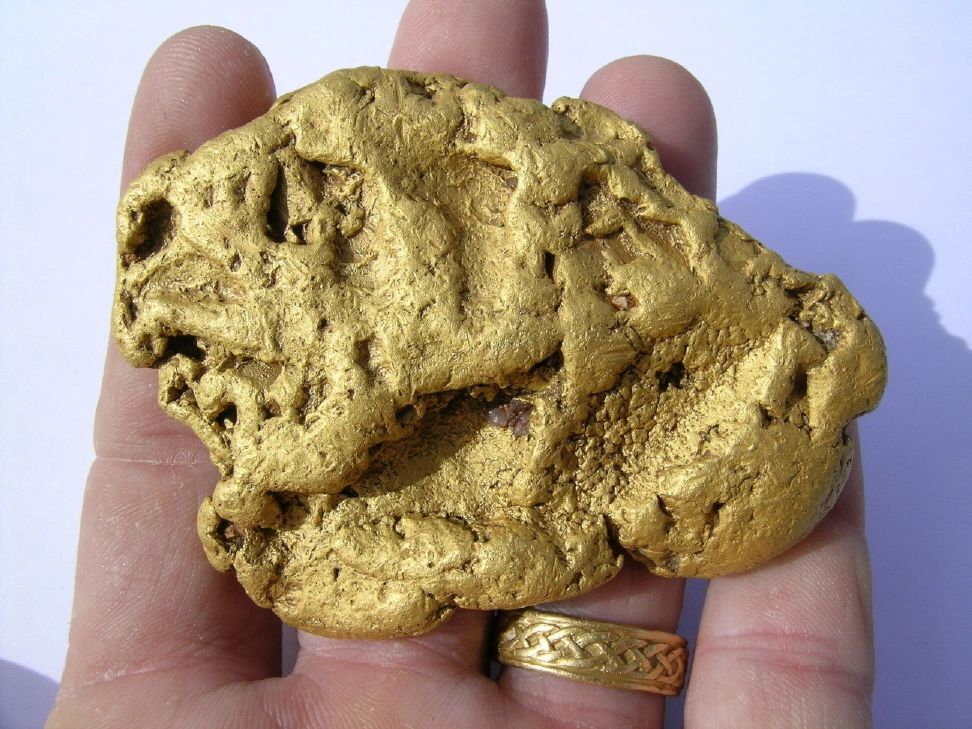BEEHIVE, BISHOP, AND OCTAVE
CONSOLIDATED GOLD MINES

All of the Hard rock mines in the Weaver mining district owe their existence to fortuitous events in 1863. It was then that a prospecting party led by the famous frontiersman Pauline Weaver made a discovery that would change the future development of the Arizona territory. Although the actual circumstances are unclear, what is not in doubt is that they led to the discovery of a fabulous deposit of gold nuggets (some the size of potatoes) atop a steep rocky mountain now know as Rich Hill. The prospectors apparently had a gentleman's agreement that no one would take more than a coffee can of nuggets per day!
After some years passed the depletion of all the easy placer gold caused miners to turn their attention to hard rock mining. The most notable and productive mine in the area was the Octave which makes up the western 1/3 of the same vein as the Beehive and Bishop group. We believe 2007 marks the first time in history that all three hard rock mine groups on the Octave/Beehive structure are under consolidated control. This new consolidation leverages far greater economy of scale than any one of the independent mine groups alone.

The Octave group (from West to East) includes the Dunbilly, Grey Devell, Antelope, Golden Road, Uncle Sam and New Era lode patents. The Bishop group is composed of the Thunderbolt and the Verno lode patents. The Beehive is made up of the Golden Age, Golden Cloud, Highland, Beehive, Golden Star, Gold Standard, and the East Extension lode patents. Patenting is a legal provision whereby mining claims on public land could become private land if certain conditions were met. This deeding would allow for use or sale by the owner for the purpose of mining, ranching, homesteading etc. This provision was enacted in 1872 to encourage development and settlement of Western North America.
The Octave claims became a commercial gold mine in the 1890s when a group of eight investors formed the "Octave Gold Mining Company" and began underground mining using the modern methods of the time. They built a mill to process their ore and built a safe and comfortable "company town" for their workers to occupy. They installed running water in the buildings, commissioned a fire dept and even issued Octave token money to pay the workers. These tokens are occasionally found by modern detectorists in the area and bring $300-$1200 at auction. The mine was operated in ensuing years by different groups with varying degrees of success until the mines formal closure at the start of WWII.
Small scale mining and illicit "High Grading" occurred on the property until the 1970s when wild west returned and the mine became the site of a feud involving religious cults, self avowed "patriots" and good old fashioned gold swindlers not to mention the state and federal authorities.
Through the years the Octave has a well documented production of over 80,000 Oz. of Gold
as well as about double that weight in Silver but these figures only include final smelter data from the largest operators and don't reflect the SOP of "high grading" (stealing valuable ore) by workers and management. Additionally these ultra conservative numbers do not include production from small and leasehold operators. One researcher has put the production closer to 200,000 Oz.
The Thunderbolt is adjacent to the New Era claim at the east end of the Octave property. It was located in October of 1895 by Tim Maher and John McDonald. Within a few years it became the property of J.T. Bishop and T.H. Field, local mercantile owners at the nearby town of Stanton who had located their "Verno" claim adjacent to the Thunderbolt on the Northeast.
Apparently Maher and McDonald formed some sort of business arrangement and became indebted to Bishop and Fields. Like many store operators of the time Bishop was more successful than the average miner and often received title to valuable mines as payment for goods he had advanced to prospectors who would eventually give up. Bishop seemed to have better luck than his partner too and soon became sole owner of both claims which now bear his name. After Bishop and his family left the area for greener pastures the property was worked on an intermittent basis under lease until 1936 when a flood caused the lower levels of the mine to become inaccessible. The operators had been storing their high grade shipping ore in the mine for security. Due to financial and legal problems, including unpaid lease and royalty payments, they were unable to retrieve the ore from beneath the waters. This was the beginning of the end for the mine and the U.S. entry into WWII a few years later effectively sealed its fate since it was non essential to the war effort. In 1982 a few miners installed a hoist, pumps, compressors and replaced rails to allow the recovery of the ore left behind. They reportedly did fairly well.
Beehive info coming soon.
Historical documentation is available from the Arizona Department of Mines and Minerals.
Check out ICMJ's Prospecting and Mining Journal April 2008
which featured us on their cover and in an article titled
"Assembling a First Class Mining Property"
Or
For published info about the Ghost Town and Mine of "Octave"
Click the image below to link to
the new book by Dr. Erik Melchiorre:
